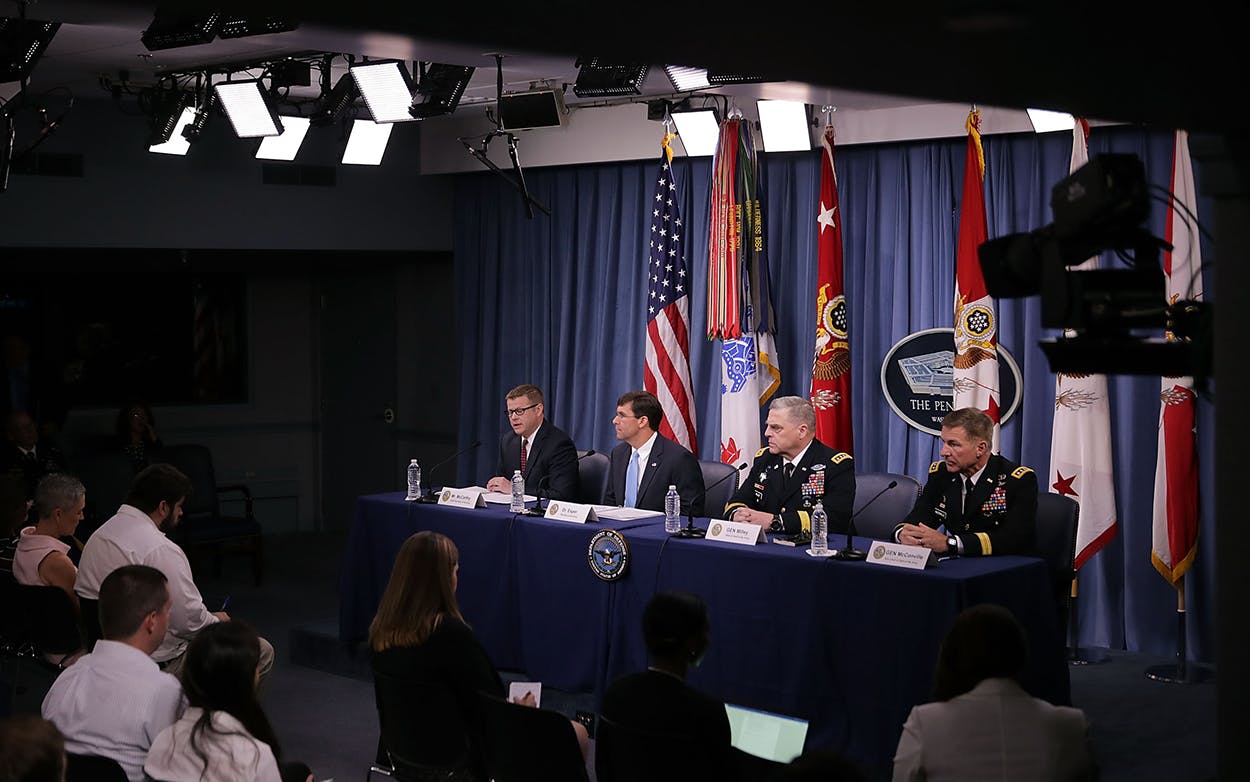To select the headquarters for its new Futures Command, the U.S. Army took a page from Amazon, pitting American cities against each other in a bidding war similar to Jeff Bezos’s protracted search for the online retailer’s so-called HQ2. Starting with 150 potential locations, the Army used metrics like research funding and patents filed to narrow the list down to 30. Factoring in quality-of-life concerns further winnowed the contestants to 15, a list with significant overlap to Amazon’s 20-city shortlist. The Army then dispatched a ground team to evaluate the final five cities: Boston, Minneapolis, Philadelphia, Austin, and Raleigh, North Carolina.
On July 13, the Army announced that it had selected Austin, citing the city’s entrepreneurial culture and the presence of the University of Texas, as well as economic incentives that included office space in the UT System’s new downtown headquarters.
“All five final cities had an innovative culture, but the thing that really stood out was the whole regional approach that Texas happened to offer, with all the different universities and the innovation hubs like the Capital Factory and Bunker Labs,” said Army Colonel Patrick Seiber, the communications director for the Futures Command.
The new command, which will be led by a four-star general and have a headquarters staff of about 500, is part of what the Army calls its biggest reorganization in 45 years. It will oversee a number of existing Army departments, including the Army Research, Development, and Engineering Command; the Army Research Laboratories; and the Army Capabilities Integration Center.
The Army has described the Futures Command using jargon familiar from the world of technology start-ups. The command will “turn ideas into actions through experimenting, prototyping, and testing.” It will “get solutions faster and products out to soldiers faster.” But rather than developing the newest killer app, the Army wants to produce the newest killers—citing the need for “soldiers of unmatched lethality,” in the words of Army Secretary Mark T. Esper.
Barbary Brunner, the chief marketing officer of Austin software firm Phunware and a board member of the Austin Technology Council, compared the Futures Command to experimental labs like Xerox PARC and Google X. “If you look at some of the technology giants, each of those companies move slower than an early-stage startup,” Brunner noted. “But those companies also have an innovation and research division inside of them where people are moving quickly on ideas. So while you can say that large military organizations tend to be traditional and slow-moving, I think there’s also an appetite for developing innovation.”
The University of Texas System was a natural partner for such an initiative, according to deputy chancellor David Daniel. “We have such a big research enterprise, and so much of it is relevant to the Army,” Daniel said. “We have the largest supercomputer of any academic institution. We have the only Biosafety Level 4 facility at a U.S. academic institution. We run a $1 billion lab for the Navy. It’s a tremendous opportunity to take the people and skills we have and assist the Army in its vital mission.” (The Texas A&M University System has announced that it will also be working with the Futures Command.)
But while Austin mayor Steve Adler and other city officials have touted the Futures Command’s potential economic contribution to the city, Eva Deluna Castro, the program director for the Invest in Texas Team at the Center for Public Policy Priorities, expressed skepticism about the state offering economic incentives to the Army.
“It’s like any other incentives,” she explained. “If [the Army] is coming here for the high-skilled tech workers, then they probably would have come anyway. So you’re not really changing their decision, you’re just lowering their costs, and it’s money the state could have used for something else.” The Army has not divulged what incentives Texas offered, and an inquiry about the incentives to Governor Abbott’s office was not answered by press time.
In the end, the Army’s decision may have come down to culture. Brunner, the Phunware executive, spent most of her career on the West Coast before moving to Texas in 2016. “Some people in Austin don’t want to admit it, but this is the South,” she said. “There’s a great deal of receptivity to the military here.”








